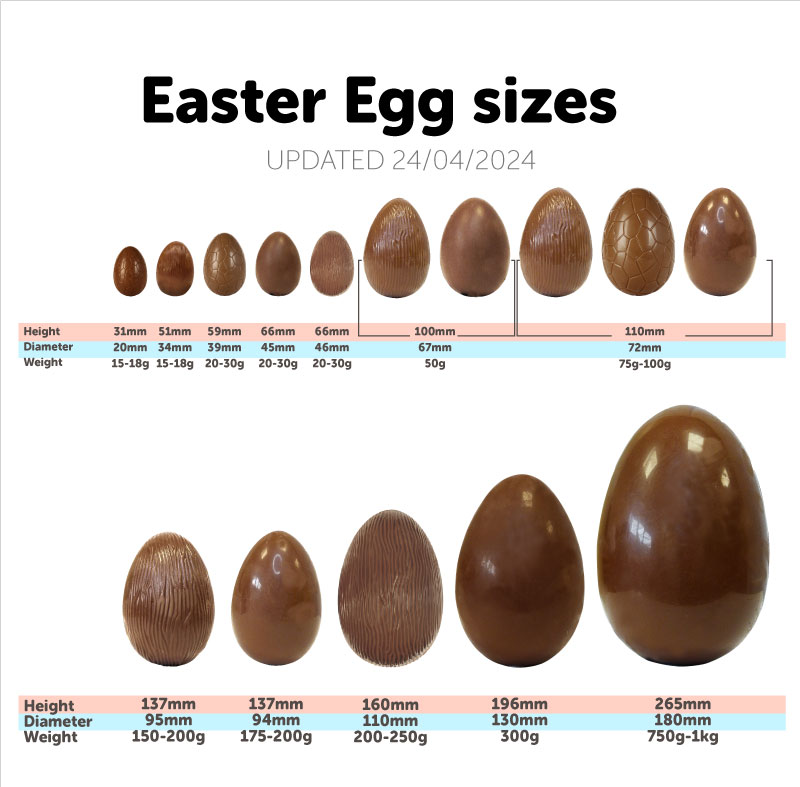Cracking the Mystery: Exploring the Relationship Between Easter Egg Weight and Size

What's the relationship between the weight and size of Easter eggs?
It's a curious question that delves into the realms of physics, materials science, and perhaps even a bit of culinary expertise. Let's crack open this mystery and explore the fascinating dynamics at play.
Firstly, let's establish the basics: Easter eggs come in all shapes and sizes, from small chocolate eggs to larger, more elaborately decorated ones. The weight and size of these eggs can vary significantly, but is there a correlation between the two?
One might assume that a larger egg would naturally weigh more. However, it's not always the case. The weight of an Easter egg depends on several factors, including customer requirements, the easter egg recipe, any inclusions added to the egg, the design of easter egg moulds used and the packaging they’re wrapped in.
Take, for example, milk chocolate Easter eggs. These delectable treats are made from a mixture of cocoa solids, cocoa butter, sugar, and milk solids. The density of the chocolate can vary depending on its ingredients and how it's processed and also if any inclusions such as honeycomb, crispies or pretzels are added to the recipe.
If a chocolate egg is hollow or filled with air, its density might be lower, resulting in a lighter overall weight.
The thickness of the chocolate shell also plays a role. A larger hollow chocolate egg with a thin shell may seem to weigh more due to its increased size, but a smaller egg with a slightly thicker shell may weigh more.
On the other hand, solid chocolate eggs, or those filled with additional treats like caramel or fondant creme, are likely to be denser and heavier for their size.
When it comes to decorated Easter eggs, such as eggs front loaded with sweets, the relationship between weight and size can be more straightforward. These eggs are typically of heavier construction to hold the sweets in place meaning that a larger egg will generally weigh more than a smaller one of similar construction.
However, there are exceptions to every rule. Handcrafted or artisanal Easter eggs may defy expectations, with variations in weight and size reflecting the unique creativity of the maker. These eggs might be intentionally irregular or asymmetrical, adding an element of surprise to their discovery.
Packaging can make a smaller egg seem larger and weightier. An egg that is packed in more environmentally friendly packaging is likely to look a little smaller, but is likely to have a thicker shell so that it doesn’t break as easily without the additional packaging elements that would traditionally have protected a chocolate easter egg such as a plastic tray.
When Hames work with their customers to develop private label and business branded Easter eggs they always offer a basic guide about size and weight to help the customer in deciding which eggs is right for their objectives.
Once they have decided the right size for their order, we can then talk about further additions such as filling, packaging or decorations that will add to the overall weight or size.
So, as you embark on Easter activities this year, remember to marvel not only at the treats themselves but also at the fascinating science behind them.
Happy Easter!
